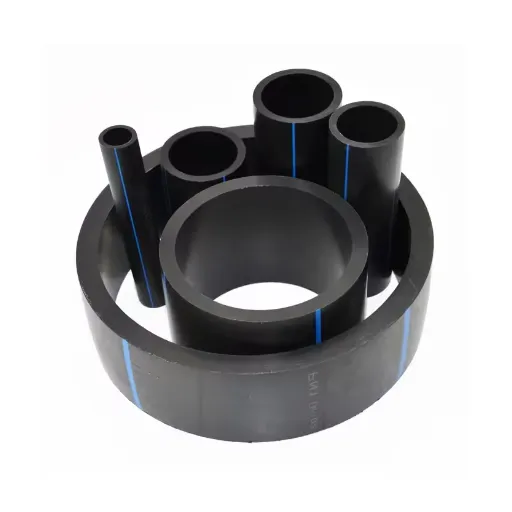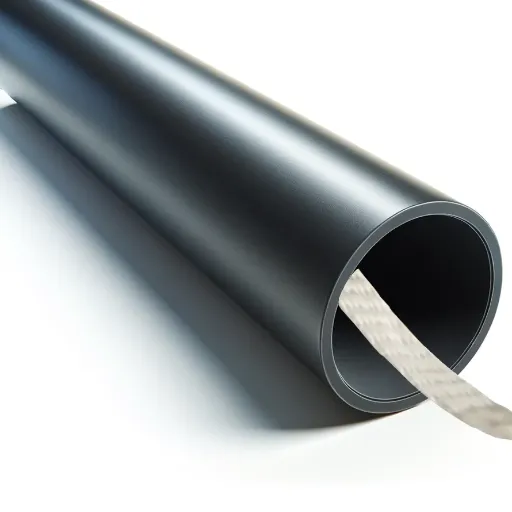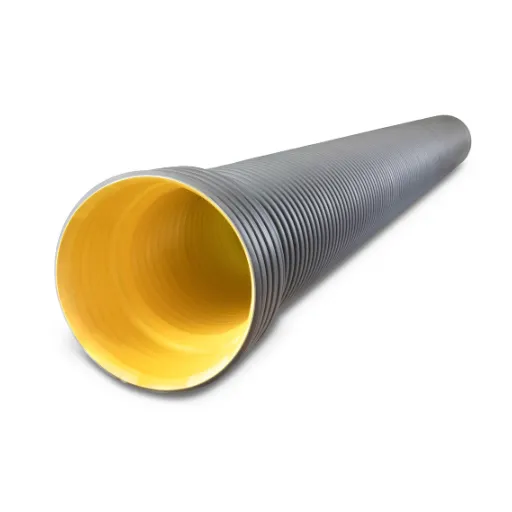Recycling of High-Density Polyethylene (HDPE) pipes constitutes a major aspect of the development of sustainable waste management systems and mitigating ecological impact. The current guide intends to elaborate on the processes of recycling HDPE pipes from start to finish. To begin with, we will focus on the characteristics of HDPE and more deeply, consider reasons why it is the most widely used polymer in many industries. Then we will address the systematic procedures of collection, sorting, and preparation of HDPE pipes for recycling, along with the auxiliary tools and technology needed for those processes. Besides those issues, the blog will also deal with the positive environmental and economic impacts of recycling HDPE, which are useful to know with the aid of the circular economy. At the end of this document, readers will have at their disposal some practical recommendations and practical measures that can enhance the effectiveness of their operations with plastic recycling. Sustainable development and resource efficiency will benefit from it.
What is HDPE and why is it important to recycle?
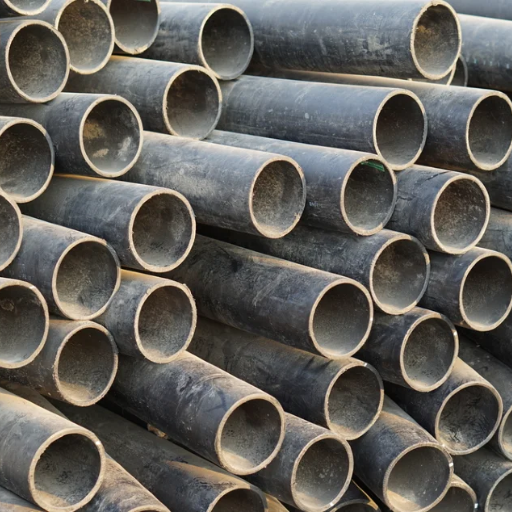
High-Density Polyethylene or HDPE is a thermoplastic polymer that can be molded into various shapes and is easily adaptable. It is used for producing strong and resistant materials such as containers, pipes, and even bottles. It is the most commonly used polymer because of its tensile strength, and resistance to moisture and chemicals. Due to their extensive usage, HDPE materials can do considerable damage to the environment which is why the importance of recycling polymer comes into play. The negative impact of HDPE products can be greatly reduced by recycling them. During the production process of HDPE, there is a massive amount of greenhouse gas emissions which can be reduced by implementing recycling. Integrating these approaches leads to a more efficient circular economy.
Understanding high-density polyethylene (HDPE)
High-density polyethylene, or simply HDPE, is a thermoplastic polymer synthesized from petroleum. Due to its unique molecular structure, having few branches, it is characterized by high tensile strength, durability, and a low degree of permeability. These qualities confer upon HDPE exceptional resistance to impact, moisture, and chemicals. For these reasons, HDPE is very common in industries such as packaging, construction, and automotive. Its applications vary from the production of bottles, pipes, and geomembranes to plastic lumber. The strength-to-weight ratio of HDPE makes it advantageous in many industries and economical to its users. Its ability to withstand environmental stress cracking makes it a greatly preferred choice for industrial and civilian use.
Environmental impact of HDPE plastic
When considering the impact of HDPE plastic on the environment, one must take into account several factors. Firstly, the merits of HDPE: it is durable, easy to recycle, and much more environmentally friendly than several other plastics. This is because the recyclability of the material significantly diminishes the demand for the production of virgin plastics and, if handled carefully, can lead to a more significant decrease in waste. Secondly, the flip side of the coin: the uncontrolled disposal of HDPE makes an unfashionable but vivid contribution to pollution, as the materials used take hundreds of years to biodegrade in landfills and pose a danger to the ecosystem by becoming microplastics. From an industrial point of view, the manufacture of HDPE is associated with considerable expenditure of energy and, consequently, emission of gases. These are the main ecological concerns caused by the production of HDPE. Nonetheless, new cleaner technologies of production together with the larger scale of recycling offer the hope to diminish these consequences.
Benefits of recycling HDPE pipe
Recycling HDPE pipes offers multiple environmental and economic benefits. First, that leads to a significant decrease in the need for new raw materials, thus saving natural resources like petroleum which is essential for the production of HDPE. It is also beneficial because it lowers energy spending since creating recycled HDPE uses around 88% less energy than crafting new HDPE from raw materials.
This process is also effective in minimizing greenhouse gas emissions. Approximately 1.6 metric tons of carbon dioxide are released for every ton of HDPE that gets recycled which aids global efforts to fight climate change. In addition to this, recycling of HDPE pipes also precludes prevention of these materials from landfills which alleviates the space used up and mitigates the pollution caused by plastic which harms the ecosystem.
On the technical side, recycled HDPE can retain almost all of the material’s original properties. It remains tough, elastic and resistant to chemicals which allows it to be used for many things such as drainage systems, irrigation systems or cable conduits. The level and stability of the performance of the recycled material can be significantly improved by sorting and cleaning it carefully during the recycling process. These advantages make a solid argument for the need to increase industrial scale recycling efforts for HDPE pipes.
How can I prepare an HDPE pipe for recycling?
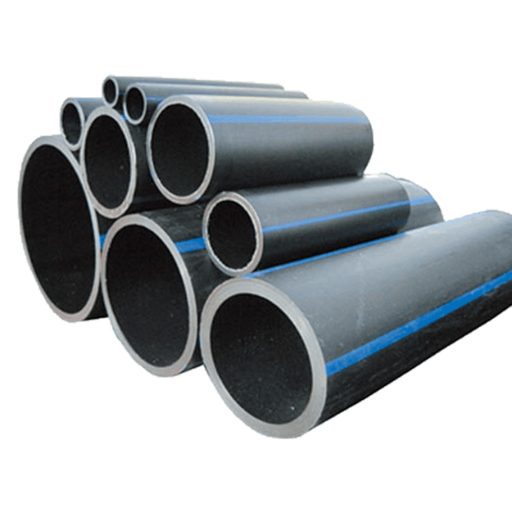
To get an HDPE pipe ready for recycling, these guidelines must be followed:
Cleaning: When preparing an item for recycling, make sure the pipe is given a thorough cleaning so that materials such as oil, grease, or any other non-water soluble substances do not pose a difficulty to the process. Using adequate cleaning agents is essential.
Inspection: Assess the pipe for poly wrappers, coatings such as paints or any other nonHDPE materials as well as metal fittings which are considered hazardous materials and need to be taken care of before the recycling process.
Cutting: Break the pipe into smaller pieces by utilizing any cutting tools, this makes the pipe easier to manage and facilitates transportation and processing during recycling.
Sorting: Classify the materials to separate the HDPE substance from other forms of plastics or mixed substances. Doing so makes the recycling process more efficient and improves its quality.
Proper Residuals Disposal: As per locality laws and guidelines, dispose of the residual components that are nonHDPE as well as any other waste in a safe manner.
Cleaning and sorting HDPE pipe
The following steps, cleaning and sorting the HDPE pipe are steps crucial in the recycling chain to make the material amenable to further work and up to set standards.
Cleaning Process
Pipes are normally put through a washing system that incorporates a few cleaning processes akin to chemical agitation, high-pressure water cleaning, and soaps to remove oils and dirt, to effectively eliminate dirt, oils, and surface contaminants from the HDPE material. If cleaning aids are required, there are methods which are both safe and compatible with HDPE. Soaps, solutions, and water are a few things used to effectively clean. An HDPE’s water pressure threshold lies between 1500 and 3000 PSI which is to be used with the appropriate temperature range of 60 degrees Celsius to avoid deforming the pipes.
Sorting Techniques
Sorting entails not just picking out but accurately determining and isolating HDPE from impurities such as PVC and Polypropylene PP. For successful targeted HDPE extraction, sophisticated techniques such as water baths, where the utilized water has a density of roughly 0.93, enable the floating particles to separate from the remaining substances. Spectroscopic sorting such as Near Infrared or Mid-Infrared Systems and density separation are commonly used. This separation method achieves a higher purity grade which makes it especially useful for recycling applications.
The processes of sorting and cleaning play a critical role in the life cycle of HDPE materials and alter the extent of environmental waste. The recycling process becomes more functional and environmentally friendly when defined technical parameters are observed and specific techniques are applied.
Cutting and sizing HDPE pipe for recycling
When it is necessary to recycle the HDPE pipe, I am sure to utilize specific pipe cutting tools like sheers, rotary cutters, or guillotining tools made for cutting this material as I intend to use it. The pipe is generally cut into pieces ranging from 2 to 3 feet to make it easier to carry and put in the shredders or granulators. This sizing helps ensure the washing and the pelletizing processes are productive as well. Furthermore, the washed fragments of the pipe are put into the cutter which is automatically set to a predetermined time to further eliminate any wastes which will also refine the quality of the final product.
What is the process of recycling HDPE pipe?
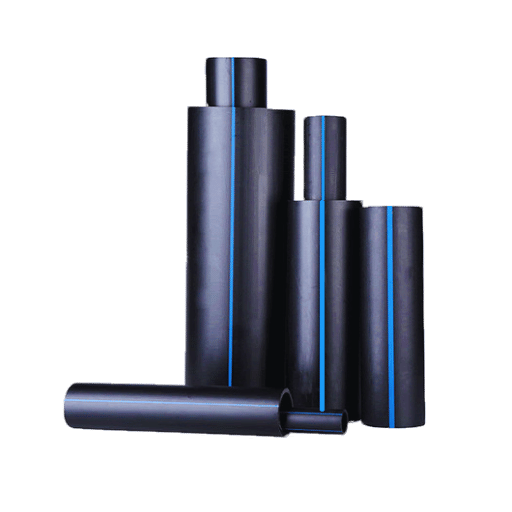
Recycling HDPE pipes entails a set of critical activities to guarantee the ultimate quality and uniformity of the material. To begin, the pipes are constructed into small, equal pieces on unique cutting machines. These pieces are later placed in shredders or granulators which further reduce the segments into smaller pieces. The resulting shreds are put through an intensive washing process to extract any remaining sand, oils, and other contaminants. After the cleansing stage, the flakes are dried and treated with extrusion and pelletizing. During these stages, the flakes are transformed into homogeneous pellets, which serve as supreme quality key materials for creating new plastic items. Thus, finishing the recycling process.
Shredding HDPE pipe: Methods and equipment
In shredding HDPE pipe we have highly strong industrial shredders uniquely designed for the extensive processing of thick walled plastics. These machines feature rotating razor-sharp blades or shafts that convert pipe parts into small and manageable pieces. We may alternate single shaft shredders for greater precision or dual shaft models for bulk volume and tougher materials. Furthermore, granulators are typically used to further reduce size after shredding to achieve minimum particle size. Equipment selection is based on pipe dimensions and the desired output size which enables efficient and uniform preparation for subsequent important recycling processes.
Melting and extrusion of recycled HDPE
The process of recycling HDPE blends melting and extruding which incorporates temperature control and particular equipment to achieve the preferred polymer structure. Firstly, the HDPE is shredded, washed, and sent to the extruder where heat is applied to a target range of roughly 356°F to 536°F or 180°C to 280°C. This temperature range is set based on the grade of HDPE that is intended to be processed. In this stage, a combination of mechanical shear and heat causes the plastic to transform into a molten state.
Afterward, the molten HDPE is injected into a die to obtain the preferred shape like pellets, sheets, or profiles. To enhance product quality, the process has filtration to get rid of any remaining contaminants followed by a cooling stage using water or air channels. The end product is reusable and can be used in the manufacturing of pipes, containers or other parts of industrial machinery making it an environmentally friendly solution for plastic waste.
Creating new products from recycled HDPE
As a durable, chemically resistant material, recycled HDPE addresses the demand for diversity in product creation. My experience suggests that the most widespread uses are the fabrication of pipes, decking, other building materials and even consumer products like bottles and toys. Step one is attentive sorting, cleaning, and shredding of the waste HDPE. The final step involves melting the shredded material and re-extruding it into usable raw material. The use of recycled HDPE can bring immense benefits to manufacturers by reducing the impact on the environment, saving resources and cutting costs, all with no compromise to the performance and reliability of their products.
Where can I recycle HDPE pipe?
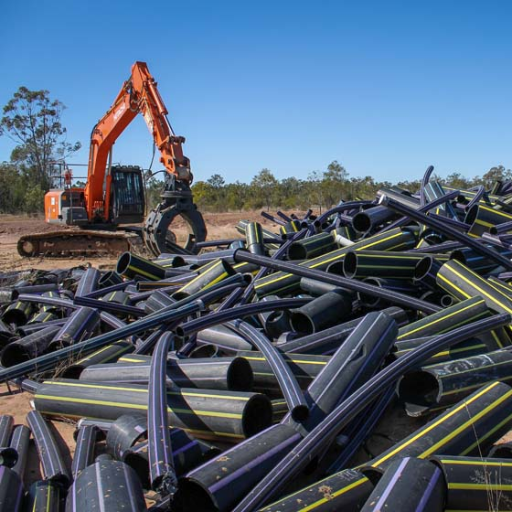
You can think of beginning with local recycling centers or municipal waste management care facilities for recycling the HDPE pipes as this type of plastic is widely accepted. To recycle HDPE pipes, one can consult specialized companies that deal with bulk quantities. Also, some other manufacturers or wholesalers may have a separate machine or distribution take back or recycling schemes for HDPE products. Always verify in advance whether the facility can deal with HDPE pipes as not all requirements can be met.
Local recycling facilities that accept HDPE
Several recycling centers within the region handle HDPE, though it is important to confirm whether they accept pipes. My findings indicate that most facilities request that the HDPE be disinfected, unsoiled, and at times, shredded to increase processing efficiency. Just so you know, HDPE is marked with the resin identification code #2 and has a density range of 0.93-0.97 g/cm³. A variety of centers, which include Waste Management, TerraCycle, and other commercial recyclers tend to accept HDPE, but it is advisable to reach out to them directly to check if they can receive the items along with their engineering specifications.
HDPE pipe buy-back programs
From what I have discovered, many firms and institutions have an HDPE pipe buy-back scheme, although this kind of buy-back may not be available everywhere. Most standard practices include a collection of clean and undamaged HDPE materials for further processing and reuse. For example, Advanced Drainage Systems (ADS) operates a program where they accept used and unwanted HDPE pipes and transform them into different usable products. On the same note, Recycling Today speaks of the increasing number of HDPE buy-back and recycling initiatives with infrastructure projects. The safest way to find out if these companies participate in the buy-back scheme is to reach out to them or consult local manufacturers directly.
What are the challenges in recycling HDPE pipes?
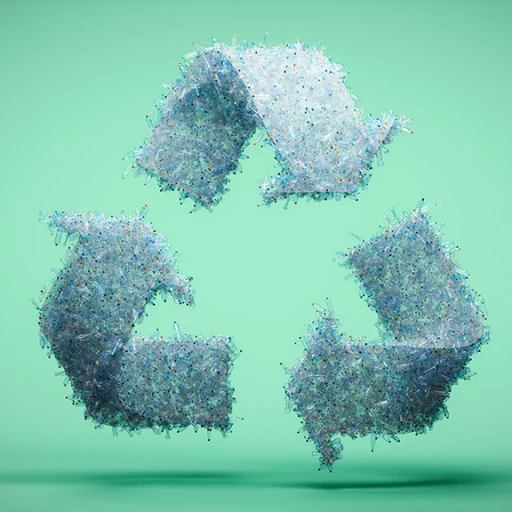
There are many serious issues associated with recycling HDPE pipes which are related to material composition and operations. A major problem is contamination because HDPE pipes are usually filled with different materials which leave residues behind. This often makes the pipe filthy and requires extensive cleaning before recycling. Moreover, other multi materials like fittings or coatings make it non-recyclable unless the materials are removed. Other operational issues deal with the cost of collection and transportation because HDPE pipes have large dimensions and occupy considerable storage volume. Finally, there is a problem of consistency in material quality over time which is important for recycling. Repetitive use of HDPE is likely to weaken its structure during time or processing, which makes its performance inefficient in new applications.
Contamination issues in HDPE recycling
Undoubtedly, the most vexing issue in HDPE recycling is contamination, which has become my specific focus for research and development on how to identify and minimize specific contaminations. The first is usually the residue from chemicals, oils, or even other things carried that ‘travel’. I believe the cleaning of these types is extremely cleaning intensive, but necessary for the quality of recycled HDPE. Then, there is the issue associated with the mixed materials like metal fittings and external coatings that have to be removed, which are not HDPE. These elements can disrupt the entire recycling process. As a solution, I focus on the processes of sorting and cleaning that do not destroy the material, yet allow for the cleanliness standards needed for the subsequent applications.
Sorting different types of plastic pipes (PE and PVC)
The sorting of polyethylene (PE) and polyvinyl chloride (PVC) pipes is imperative to ensure the quality of the recycled product, given the different materials involved. The effective separation of PE from PVC is a vital step in the recycling chain, owing to their differing chemical structures, compounds, melting points, and processing methods, which would otherwise compromise the integrity of the recycled end product.
To properly separate PE from PVC pipes, advanced sorting technologies are typically employed. For instance, density-based separation methods are highly effective because PE is less in density than PVC. Infrared spectroscopy also is very common since it can differentiate the specific chemical signatures of each polymer type. Furthermore, such techniques allow accurate identification and separation of the material. Moreover, smaller operations can use crude means of automatic sorting such as flexibility tests and surface texture—PE is more flexible and has smoother surfaces while the rigid PVC pipes are rougher.
Upon segregation, every type gets processed per its recycling procedures. For example, PE pipes are typically washed, ground, and then re-granulated into new pellets for uses such as fabricating films or building new water pipes, whereas PVC is much more delicately handled because it can leach toxic chemicals when abused. These sorting instructions not only guarantee high quality products but also minimize the adverse effects of plastic waste on the environment.
References
Frequently Asked Questions (FAQ)
Q: What is HDPE pipe recycling?
A: HDPE pipe recycling involves the process of collecting and processing plastic pipes made of high density polyethylene, or HDPE for short, to create new products. This process helps reduce waste and allows for the sustainable reuse of durable plastic materials.
Q: How does pipe shredding with a Weima work in the recycling process?
A: Pipe shredding with a Weima involves using a specialized shredder to break down HDPE plastic pipes into smaller pieces, or regrind. This is an essential step in the recycling process, as it prepares the material for further processing and eventual conversion into new products.
Q: What is the typical diameter of HDPE pipes that can be recycled?
A: HDPE pipes come in various diameters, but recycling facilities are often equipped to handle a wide range, including those with a diameter of 2.5 inches and larger, depending on the capacity of the recycling plant and their shredding equipment.
Q: What products are made from recycled HDPE?
A: Recycled HDPE can be transformed into a variety of products, such as plastic bottles, durable plastic containers, piping, and other plastic products. These products made from HDPE are known for their strength and recyclability.
Q: How can I ensure that my HDPE material is clean before recycling?
A: To ensure your HDPE material is clean, remove any contaminants or non-HDPE materials before bringing it to a recycling facility. This helps improve the quality of the regrind and the efficiency of the recycling process.
Q: Can I buy a poly pipe made from recycled HDPE?
A: Yes, many manufacturers offer poly pipes made from recycled HDPE. These pipes retain the high density and durability of new HDPE while being an environmentally friendly option.
Q: Why is HDPE considered a recyclable material?
A: HDPE is considered a recyclable material because it can be reprocessed into new products without significant degradation of its physical properties. This makes it an ideal candidate for recycling, promoting sustainability and reducing environmental impact.



